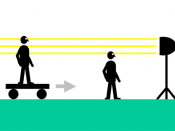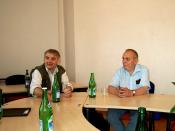Kohák
In The Embers and the Stars by Kohák the intersection of time and eternity is expressed. Kohák has focused on "natural" time, which is to say that time is not just what is expressed by a clock, or with a series of numbers on a clock. "It is, rather, set within the matrix of nature's rhythm which establishes personal yet non-arbitrary reference points." This means that time is not measured in seconds, minutes, or hours but by personal existence and experience. These "reference points" are experiences in your life that are meaningful and you help spatially distinguish points in time. Time as we know it is explained by Kohák as a "construct imposed upon nature's rhythm, subordination and ordering it". He does say that it is a useful construct, but as for the theory of relativity time does not hold up.
Eternity is considered to sum up all time; past, present, and future.
Eternity is the collection of all moments of time. Kohák explains it as the "absolute reality of being, intersecting with the temporal sequence of its unfolding at every moment". The absolute reality of being is how we focus on ourselves. This meaning of eternity is more personalized; eternity isn't just everyone's lives, but everything in our existence. Plants and animals are included in the new feeling of eternity. Every action and every experience makes up a personal eternity that is solely a personal eternity.
The intersection between time and eternity is that your experiences make up your personal eternity. The world has its solidarity, but the singular most important aspect of eternity and time is that they are related to form one existence for an individual. Life is remembered in many moments; which is time and life is formed by millions of experiences, which is eternity.


